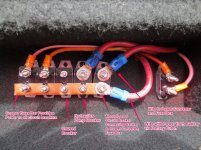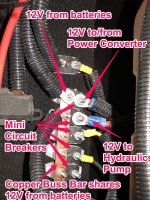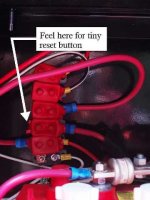As for the transfer switch, I think if you look further, you'll find that the Progressive Dynamics PD52 manual says: "When power is applied to the shore side, the contactor activates and supplies power to the panel." The contactors operate and hold only when the circuit board inside senses correct voltage on L1. When voltage drops below about 105V, the contactors break contact to prevent damage to your trailer from low voltage. I believe that's the case for either generator power or shore power. So I don't think the contacts are normally closed.
It depends on which Transfer switch is used: When my generator is in use I always hear a thud from the relays kicking in, but I hear nothing when connecting to shore power. I don’t know which transfer switch I have. It is better to have a high power relay contacts normally closed before applying power to prevent contact arcing. If the 5200/5300 series are closing contacts while power is applied at the contacts, I question the reliability and longevity. Both models could have a relay control circuit that cuts out the power if it falls below 105ac rms.
From the manufacturers manuals:
The 5200/5300:
When power is applied to the shore side, the contactor activates and supplies power to the panel.
When power is applied to the Gen side there is a 20-45 second delay then the Gen side contact will activate, power will go to the panel from the Gen side and the shore side will be locked out.
If shore power returns while the Gen power is present, nothing will happen.
When the Gen power is removed the contactor will drop out and allow the shore side to supply power.
Generator overrides shore power.
In a single leg application the HOT1 side must be used for the control circuitry to work.
The 5100 series:
When the shore power is applied the relay is at rest and power is transferred to the panel.
When Generator power is applied there is a 20-45 second delay and then the relay activates transferring Generator power to the panel.
If shore power returns while the Gen power is present nothing will happen.
When the Gen power is removed the relay will drop out and allow the shore side to supply power.
Generator overrides shore power.




